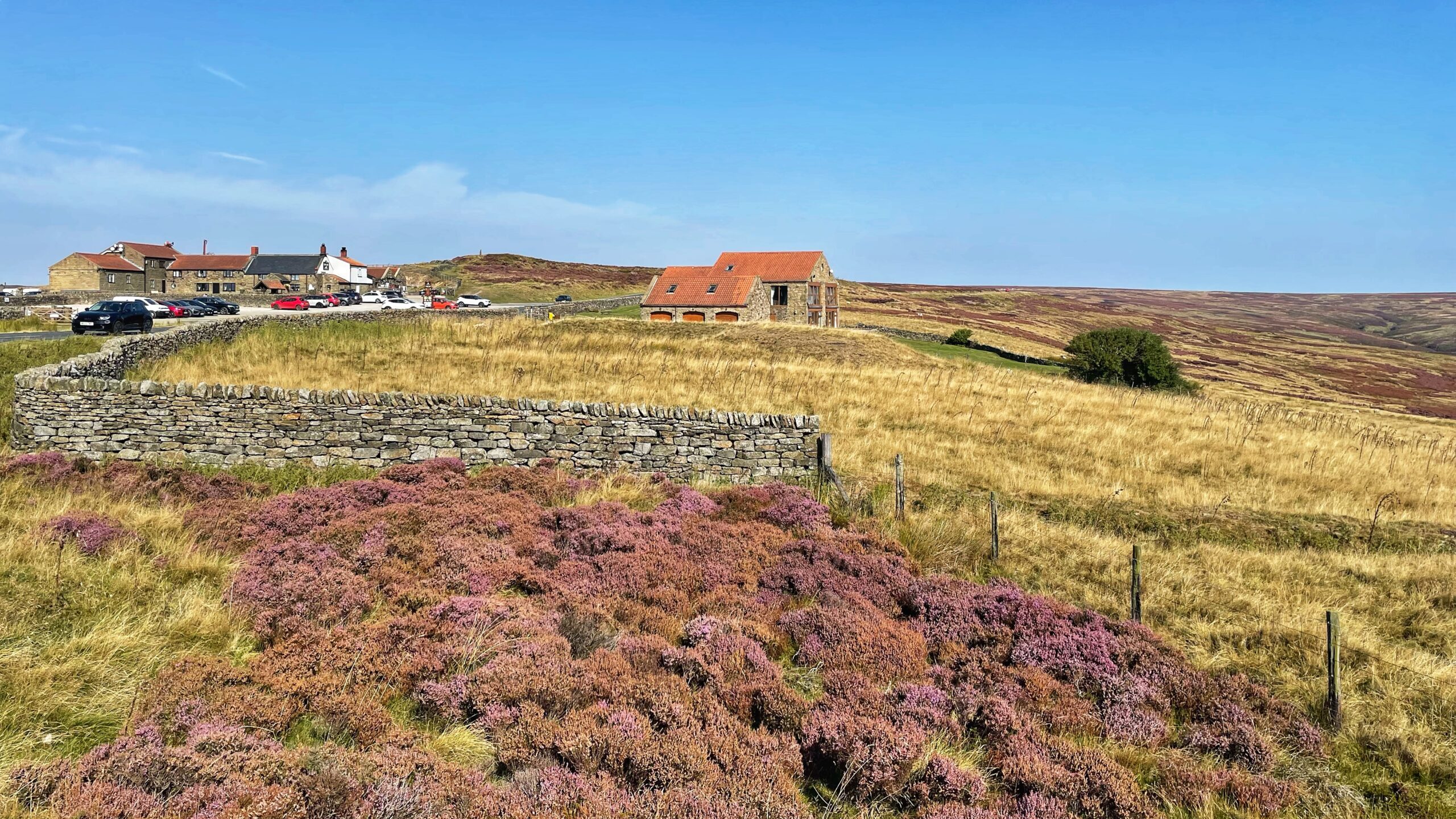Perched high on Blakey Ridge, between Rosedale and Farndale, stands the Lion Inn, proud of its claim as the highest inn on the North York Moors. It is a welcome halt for weary Coast-to-Coast walkers, who by midday are replaced by visitors seeking lunch rather than lodgings. Few, one suspects, pause to read the framed scroll in the bar that recounts the inn’s long and curious past.
Blakey Ridge has drawn travellers since prehistory. Neolithic burial mounds mark the landscape, Cockpit Howe just behind the inn, and Loose Howe across the dale where a Bronze Age chieftain was buried with arms, clothing and provisions for his final journey. Ancient markers such as “Fat Betty” and “Ralph Cross” still testify to centuries of passage along this high ridge.
In the reign of Edward III, the Order of Crutched Friars were granted ten acres, where they built an oratory and, it is thought, the first inn on the site between 1553 and 1558. Their stay was short, most likely ended by the Black Death, but friar inns were not uncommon in the region. By the mid-eighteenth century the Lion had become a meeting place for farmers from Commondale, Danby and Fryup, selling surplus corn to horse breeders from Ryedale.
Later landlords gave the inn its character. John Portus and his family ran it for generations, living at what is now High Blakey House across the road. In the Victorian years it was kept by John May and James Maw, both colliers, who prospered after iron mining began in Rosedale in 1853. The inn soon filled with miners, navvies and the rough community at Blakey Junction, and it must have been a place of noise and drink. The Maws expanded it before emigrating to America, leaving Mrs Potts to take over in 1870 until her marriage to a mining engineer.
As the mines declined in the early twentieth century, the inn grew quieter. Phillip Johnson divided his time between keeping the Lion and farming at Church House, Farndale. After his death his widow and son Fred carried on, with Fred keeping livestock and two great dogs about the place.
The decline of the mines may have brought quieter days, but the coming of motorcars and better roads gave the inn a new life. No longer a haunt of friars or miners, it became a refuge for walkers, sightseers and summer travellers, offering food, drink and rest at the top of the moors.

Leave a Reply